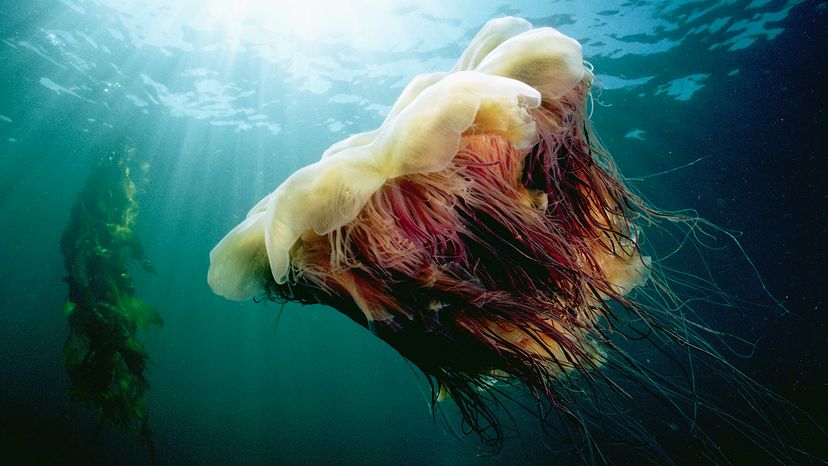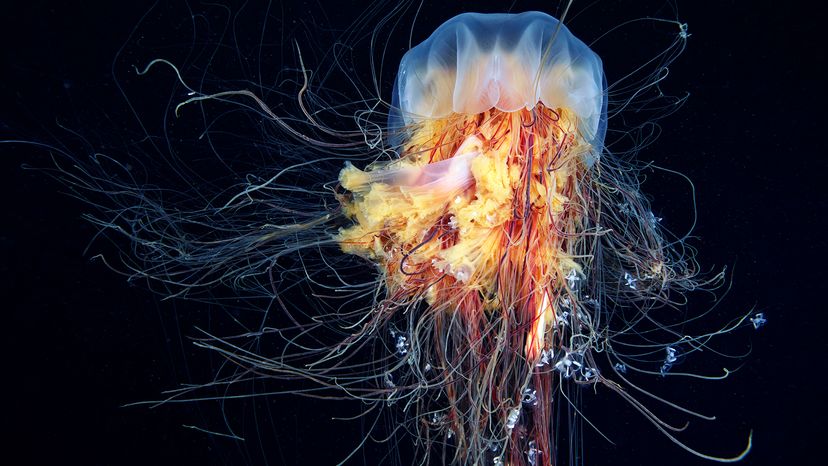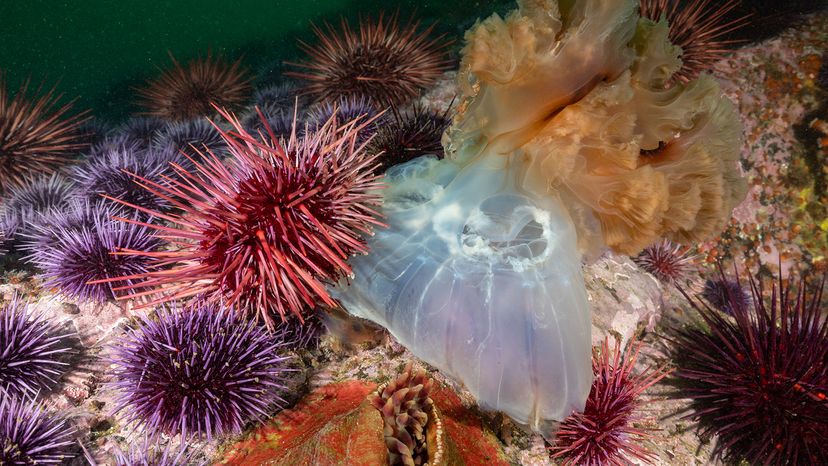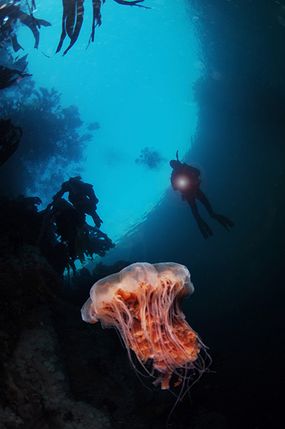
There are about 200 documented species of jellyfish pulsing their way through the world's waters. Most range from the size of your belly button to the size of a car tire.
Then there's the lion's mane jellyfish, Cyanea capillata, the largest known jellyfish on Earth. This giant jellyfish, which is usually orangish or reddish, has an impressive bell diameter of 7 to 8 feet (about 2 meters) and a thick "mane" of trailing tentacles that are around 60 feet (18 meters) in length.
Advertisement
But even larger specimens have been observed, with the largest boasting tentacles 120 feet (36 meters) in length — about the height of a 10-story building. That puts it in the company of the blue whale, the largest animal on the planet.
It's not surprising that, according to the Guinness Book of World Records, the lion's mane jellyfish is also the heaviest jelly in the sea, weighing up to 2,200 pounds (998 kg). Despite its size, this gelatinous giant has a whimsical appearance.
Advertisement


